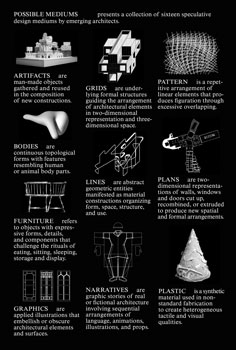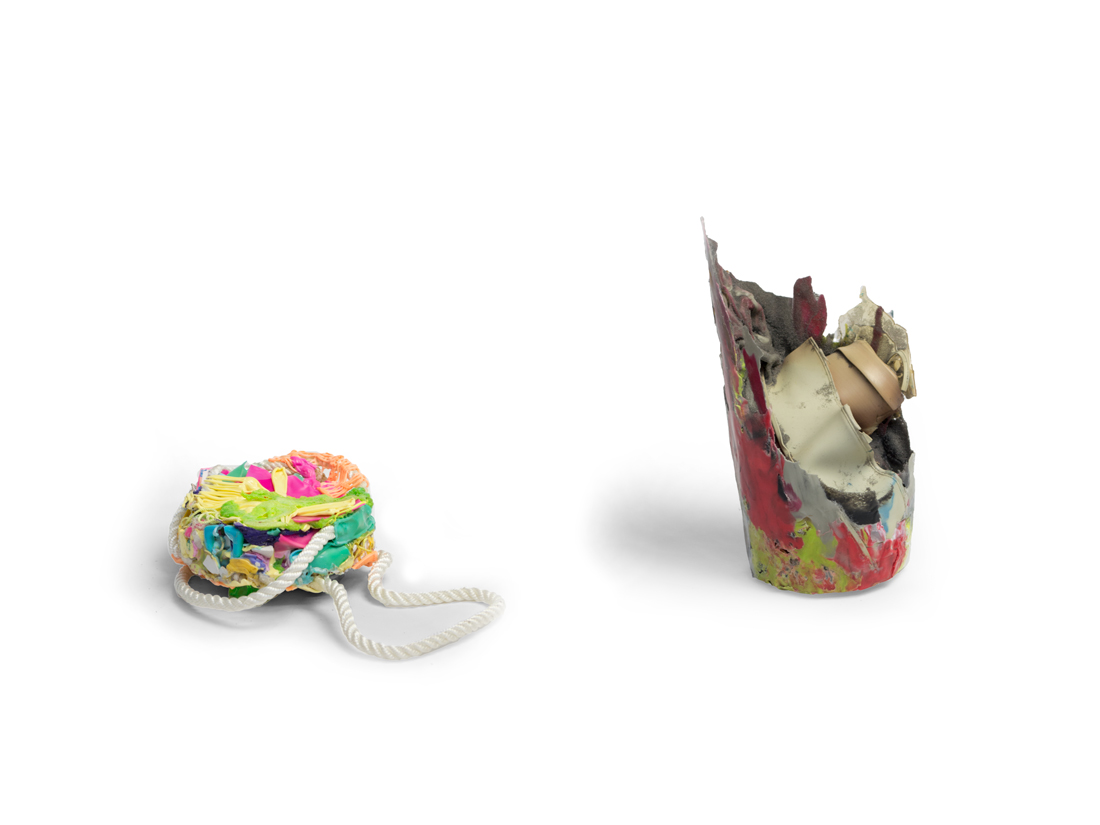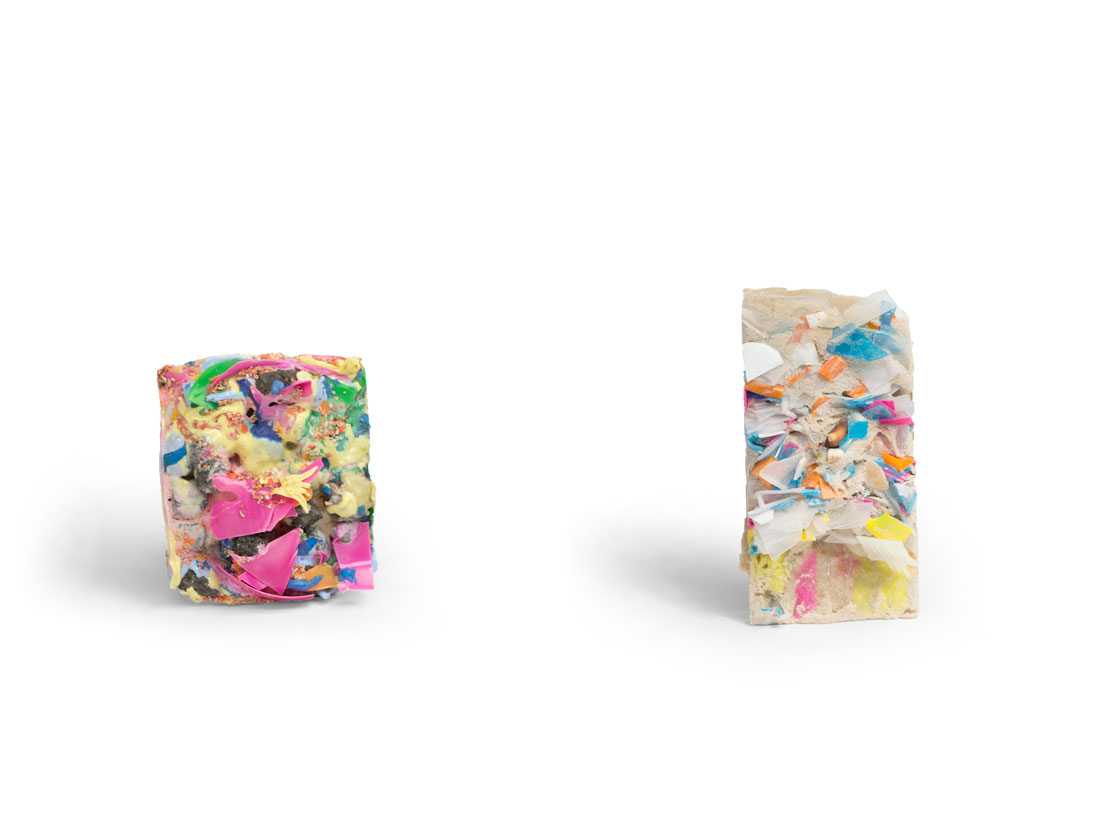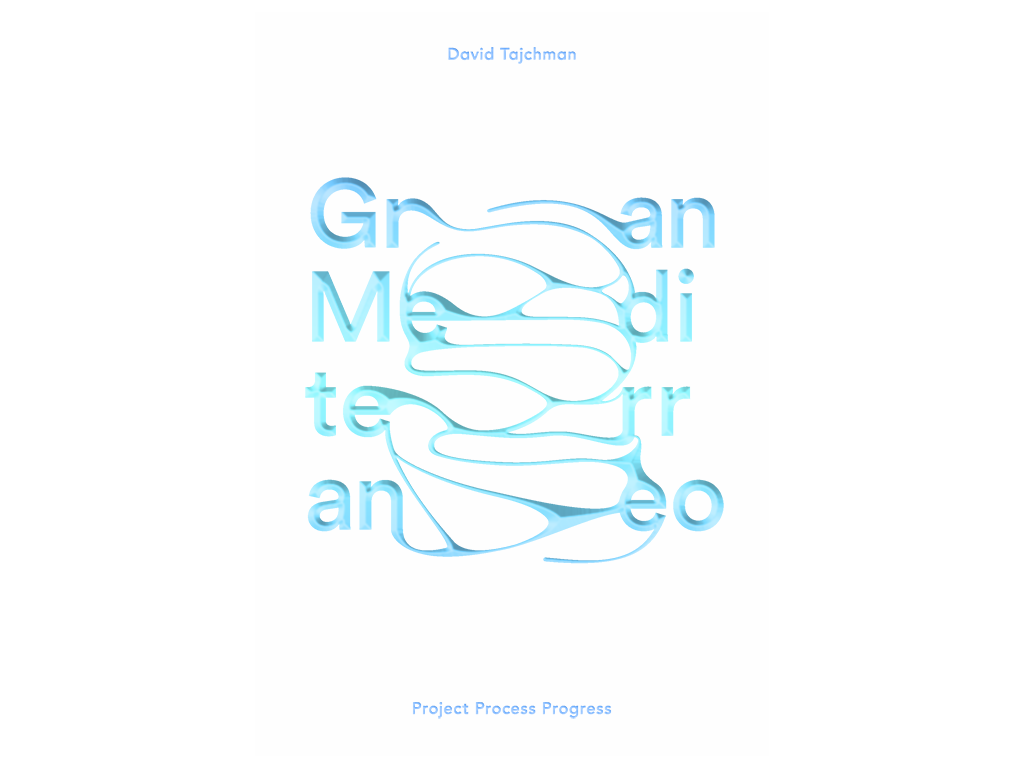A good litmus test for one’s perception of a material is to add the word “pollution” after it:
“Air pollution” = Check. This is bad.
“Noise pollution” = Check. Sound pollution, maybe not, but noise that pollutes is definitely bad.
“Plastic pollution” = Check. This is invariably a bad thing
“Stone pollution” = Hmm…. uncheck? That’s not a thing, is it?
“Gold pollution” = What? Sounds like a band name. (Actually, gold pollution is a thing but the mercury and cyanide that result from gold mining are the culprits).
While entirely unscientific, this litmus test elicits a knee-jerk reaction to a given material in excess and reveals our assumptions about its relative cultural value. For many of us, it’s a no-brainer: we don’t (or shouldn’t) like plastic. But plastics are amazing! They have enabled humanity to enter outer space and made our mattresses more comfortable, among other things. It’s clear that plastic can do almost anything other materials can do. This capacity inspired Roland Barthes to write, “…this amazement is a pleasurable one, since the scope of the transformations gives man the measure of his power and since the very itinerary of plastic gives him the euphoria of prestigious free-wheeling through Nature.”[1]
Post Rock is an ongoing material research project by Meredith Miller and Thom Moran that has been supported by the AIA’s Upjohn Research Initiative. In 2017, Post Rock received Honorable Mention in the ACSA Faculty Design Award category.
Considering this unique capacity to fulfill any and every material desire with a simple rewrite of its molecular structure, why does plastic suffer from such low public esteem? Plastic industry research shows that the public opinion of plastic is unfavorable and gets worse every year. Plastic has become synonymous with cheapness, disposability and the degradation of the environment. Perhaps this is because most people think of disposable goods, like yogurt containers, and not the polymers that make contemporary life possible, such as reliable data cable and medical equipment. It is unclear why these misapprehensions persist, yet one thing is certain: there is an enormous gap between our attitudes about plastic and its contributions to our lives.
Stone, on the other hand, has been used by Western civilizations for millennia to build bridges, roads and temples, and it is practically synonymous with beauty and durability. If you want something to “last forever” you build with stone. Stone is heavy, durable, and when polished, very shiny. These are qualities that stone shares with plastic. When plastic is said to last forever, however, it often joins the ranks of cockroaches—a scourge that won’t go away even after a nuclear holocaust. Plastic’s shiny-ness is just more evidence of its artificiality. And while plastic can be quite heavy, because it is so strong, it is often encountered as hollow forms, small parts or thin films; this perceived lightness becomes evidence of its cheapness rather than its strength.
So what would we make of a material that is both plastic and stone? Would your perception of this combination be one of a technological upgrade on nature, or of an unholy ecological wrongdoing? You’ll have your chance to decide soon: a plastic-stone conglomerate is already in production—without human assistance—in marine and coastal environments around the world. Plastiglomerates, the scientific classification for this geological material, result from the fusion of waste plastics with rock, sand, and other inorganic aggregates. Due to the aforementioned durability of both thermoplastics and stone, these rocks are likely to be around for a very long time. Plastiglomerates indicate a model of material transformation that is no longer about the “measure of man’s power” but a challenge to the presiding valuations of the materials with which we build our world. Perhaps we need another test to assess where plastiglomerates might fit in:
“Steel building” = __________
“Brick building” = __________
“Plastic building” = __________
“Stone building” = __________
“Plastiglomerate building” = __________














